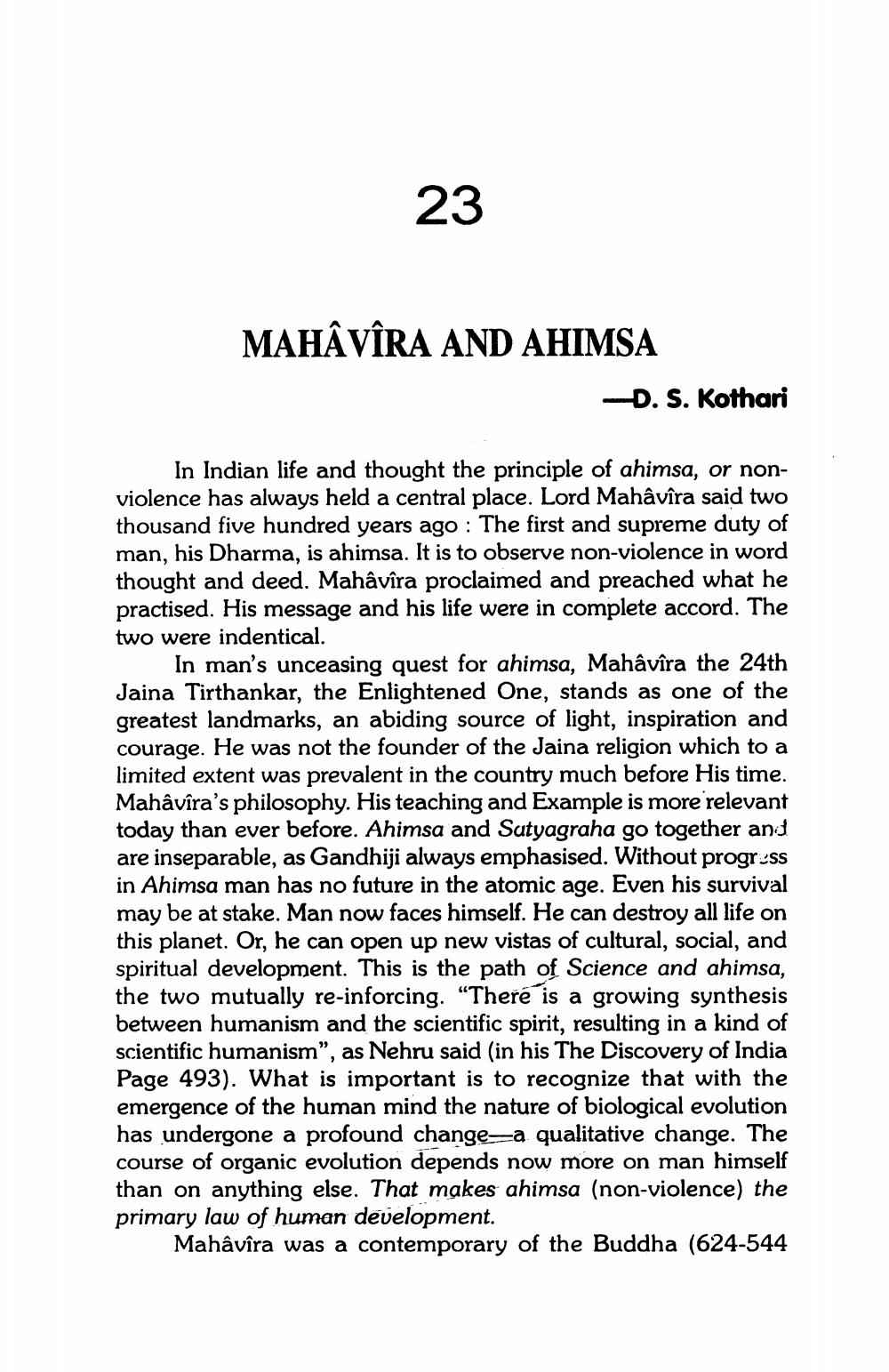________________
23
MAHAVIRA AND AHIMSA
-D. S. Kothari
In Indian life and thought the principle of ahimsa, or nonviolence has always held a central place. Lord Mahâvîra said two thousand five hundred years ago: The first and supreme duty of man, his Dharma, is ahimsa. It is to observe non-violence in word thought and deed. Mahâvîra proclaimed and preached what he practised. His message and his life were in complete accord. The two were indentical.
In man's unceasing quest for ahimsa, Mahâvîra the 24th Jaina Tirthankar, the Enlightened One, stands as one of the greatest landmarks, an abiding source of light, inspiration and courage. He was not the founder of the Jaina religion which to a limited extent was prevalent in the country much before His time. Mahâvîra's philosophy. His teaching and Example is more relevant today than ever before. Ahimsa and Satyagraha go together and are inseparable, as Gandhiji always emphasised. Without progress in Ahimsa man has no future in the atomic age. Even his survival may be at stake. Man now faces himself. He can destroy all life on this planet. Or, he can open up new vistas of cultural, social, and spiritual development. This is the path of Science and ahimsa, the two mutually re-inforcing. "There is a growing synthesis between humanism and the scientific spirit, resulting in a kind of scientific humanism", as Nehru said (in his The Discovery of India Page 493). What is important is to recognize that with the emergence of the human mind the nature of biological evolution has undergone a profound change a qualitative change. The course of organic evolution depends now more on man himself than on anything else. That makes ahimsa (non-violence) the primary law of human development.
Mahâvîra was a contemporary of the Buddha (624-544




